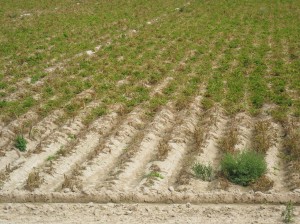30 September 2014 (09:32 UTC-07 Tango)/05 Dhu l-Hijja 1435/08 Mehr 1393/07 Gui-You (9th month) 4712
“There is no panic yet. Everybody has been telling us not to panic. There is carry-over from last year’s malt supply. Our prices are stable until January, but beer prices are going up.”-Tim Mohr, Angry Hank’s Brewery in Billings, Montana
Bad news for beer drinkers, it’s being reported that the malt barely crops in Idaho, Montana and North Dakota have been nearly destroyed by unusually cool and wet summer weather (what global warming?).
Anheuser-Busch and MillerCoors are dependent on those crops. A report out of Montana said the crops sprouted too soon. When the barely sprouts is crucial as it has to have enough sugar at harvest time to be used to make beer. It also must be harvested before it germinates, and the abnormal rain caused most barely crops to germinate before harvest.
What this means is U.S. beer brewers must import their barely from other countries for the 2015 brewing season, which means it’s going to cost beer drinkers more money.
But it’s not just barely that’s going down in flames. Hay, wheat and potato crops took a big hit as well, which means grocery prices are going up in 2015.
According to the University of Idaho, Idaho farmers lost at least $220-million worth of hay, barely, wheat and potato crops this year, due to excessive rain!
At the beginning of September the U.S. Department of Agriculture (USDA) declared Twin Falls and Jerome, in Idaho, disaster areas. This allows farmers to borrow money from the government to get them through next season, due to not having any crops to sell. (it’s just another way to keep family farms in debt)
Last week, harvest results were being reported and it wasn’t good. According to the USDA wheat prices are already inching up, as the spring harvest totals were below the five year average.
This is the beginning of the corn harvest and so far only 42% is mature. The past five year average is 54% mature. On top of that only 7% has been harvested, the five year average for the beginning of harvest is 15%.
The price of beef cows continues to go up. And while the price of live cows goes up, the number of slaughtered cows goes down, ensuring the price you pay in the grocery store will skyrocket. Another factor that will drive up beef prices are the failed hay crops in states like Idaho (which is a big cattle ranching state).
Late blight kills Idaho’s 2014 potato crops?
GMO CROPS INTENDED TO CREATE STARVATION IN THE U.S. & CANADA?

